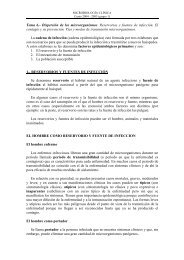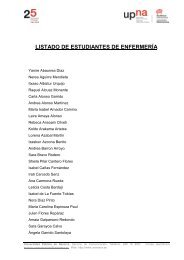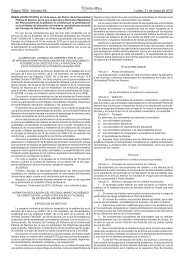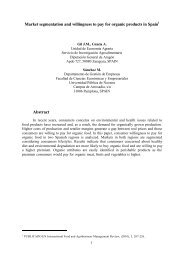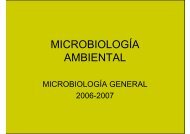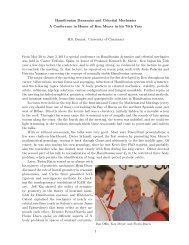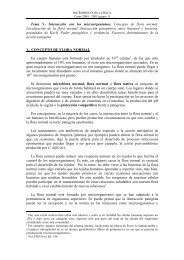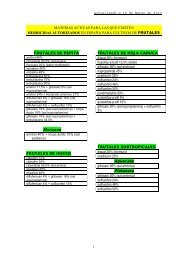Identification of Prosopis juliflora and Prosopis - Universidad Pública ...
Identification of Prosopis juliflora and Prosopis - Universidad Pública ...
Identification of Prosopis juliflora and Prosopis - Universidad Pública ...
Create successful ePaper yourself
Turn your PDF publications into a flip-book with our unique Google optimized e-Paper software.
9Figure 3. Amplification <strong>of</strong> the marker L04 410 using oligonucleotide L04 as primer <strong>and</strong> the DNAspurified from all accessions analysed in this paper as templates. Note that this oligonucleotideamplifies a low molecular weight marker present in P. pallida accessions. Lane names as Figure 1.classified as P. affinis, it could be seen that a DNA fragment <strong>of</strong> approximately520 bp was present in all the samples (Figure 4a). This result suggests that theL01 (520) marker could be a P. <strong>juliflora</strong>–pallida complex-specific marker. DNAhybridisation experiments (see below) confirm this result (Figure 4b).RAPD markers identityThe identification <strong>of</strong> species on the basis <strong>of</strong> their RAPD pr<strong>of</strong>iles relies on theassumption that b<strong>and</strong>s <strong>of</strong> the same size appearing in different individuals,populations <strong>and</strong>/or species correspond to identical sequences <strong>and</strong> not only to acircumstantial coincidences in size. In order to test this assumption, hybridisationexperiments were performed with cloned RAPD markers.It could be seen that the cloned RAPD marker S11 (460) highlighted a b<strong>and</strong>that was present in plant material collected in Trujillo <strong>and</strong> Piura as well as inthe accessions from Brazil, Cape Verde <strong>and</strong> Senegal (Figure 2b). This markeralso appeared in samples collected in Brazil <strong>and</strong> classified as P. affinis as well asin the putative P. chilensis · P. pallida hybrid collected in Cape Verde. Theseresults strongly suggest that the marker S11 (460) identifies populations <strong>of</strong>P. pallida. The cloned RAPD marker S11 (460) was absent in sample seeds fromHonduras <strong>and</strong> Burkina Faso which confirms that neither sample is P. pallida.DNA hybridisation experiments using the cloned marker L01 (520) as a probeshowed that accessions collected in Peru (Piura <strong>and</strong> Trujillo) <strong>and</strong> the populationcollected in Honduras belong to the P. <strong>juliflora</strong>–pallida complex (Figure4b). The presence <strong>of</strong> this cloned marker in DNA templates derived fromaccessions collected in Brazil <strong>and</strong> Africa indicate that they also belong to theP. <strong>juliflora</strong>–pallida complex. Figure 4b also clearly shows the presence <strong>of</strong>the complex-specific marker L01 (520) in the putative P. chilensis · P. pallidahybrid.






